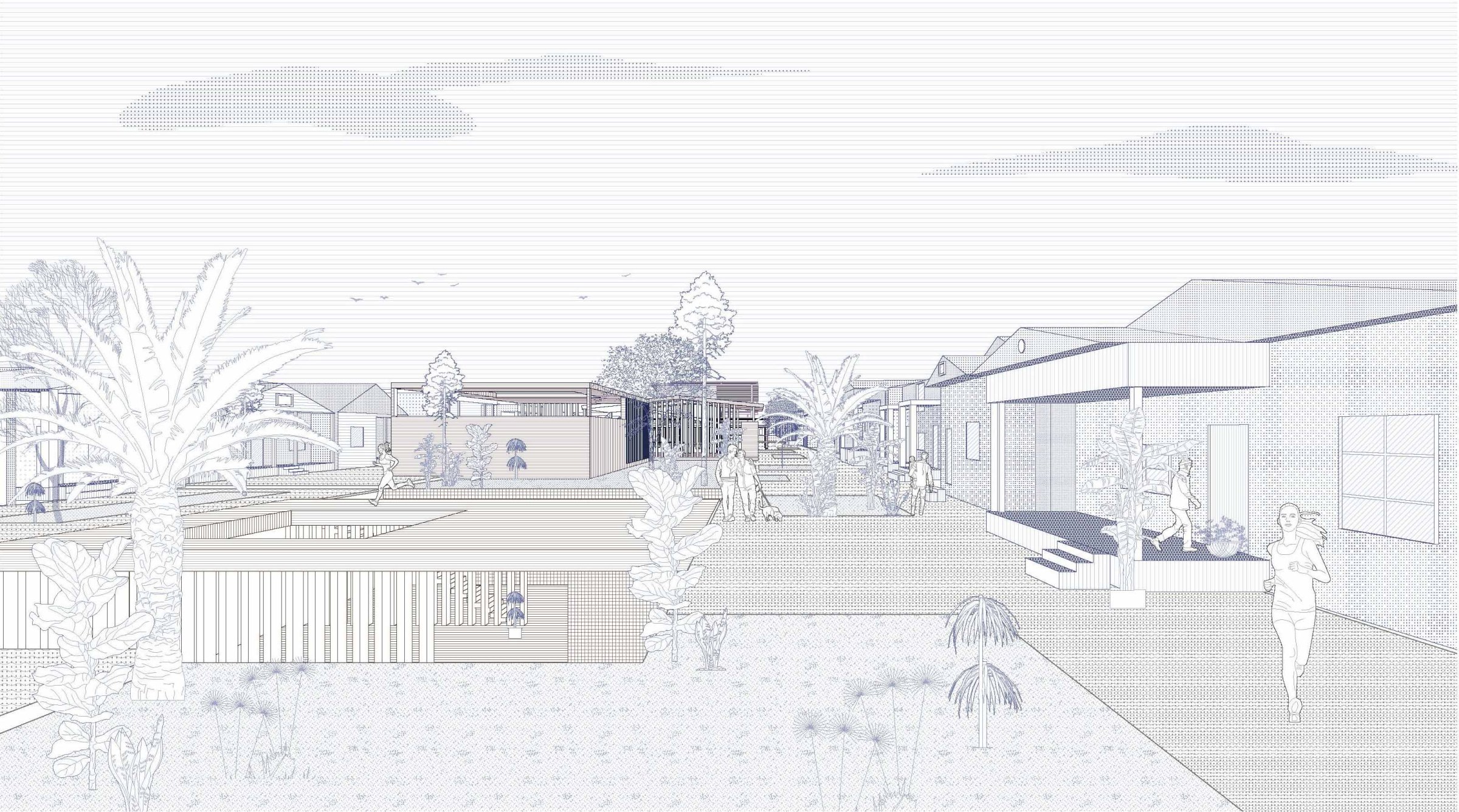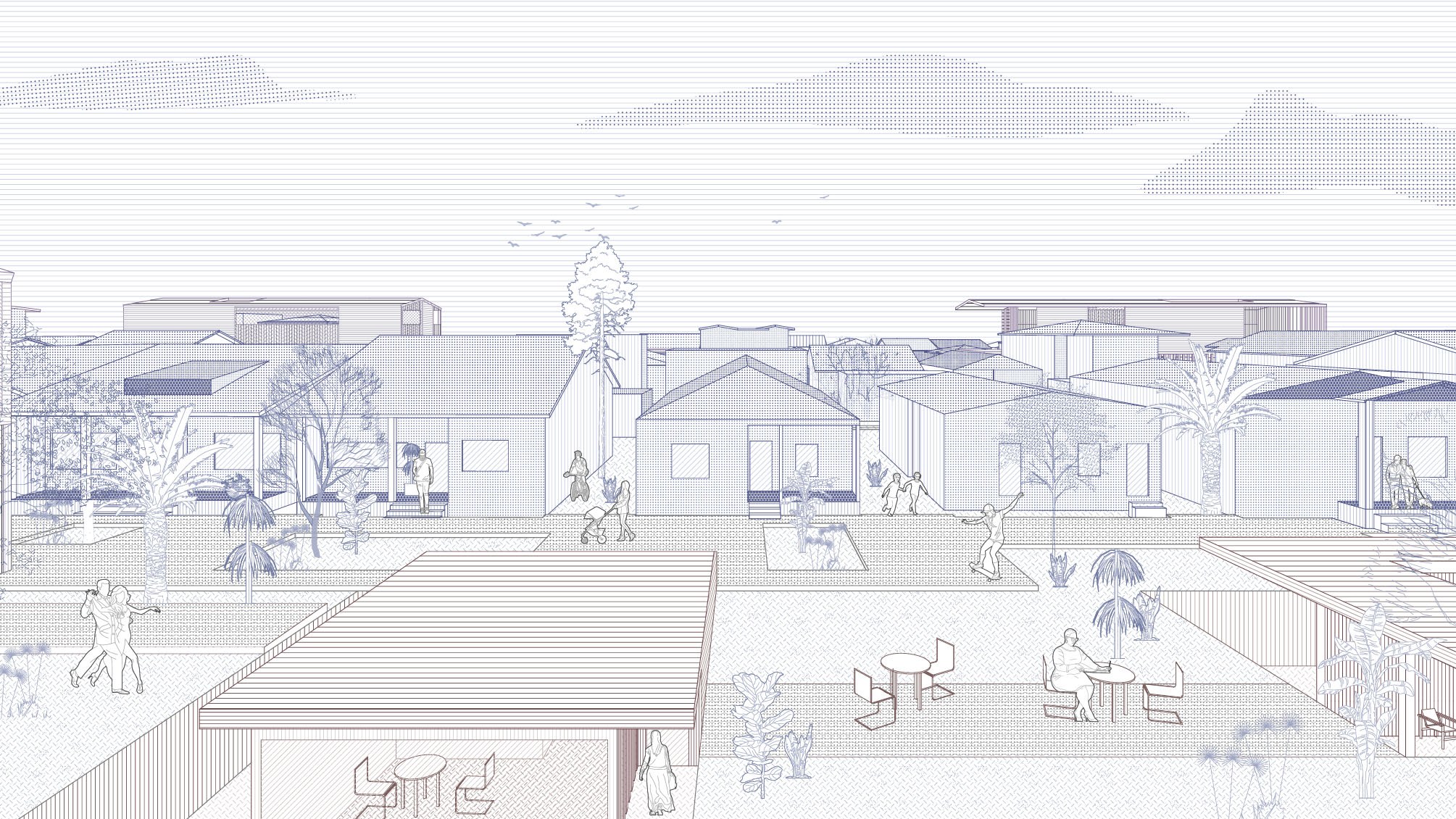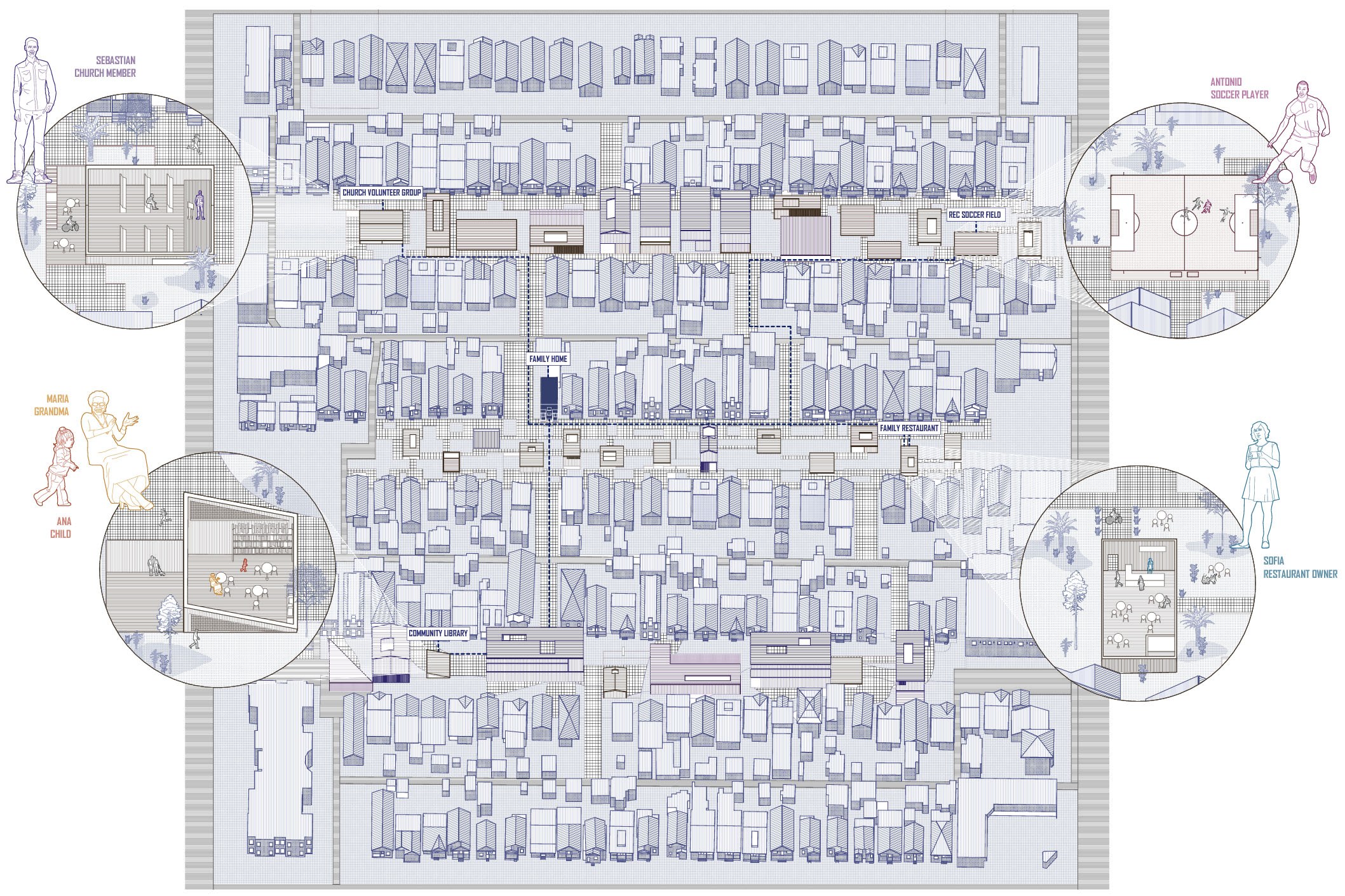Thesis Highlights
“Amending Dead Spaces of American Domesticity"

Andreea dan and tess temple, 2023
“Amending Dead Spaces of American Domesticity: Community Vitalization Through the Public-Private Intermediary”
The standardized suburban typology of the American home populated the nation in the mid 20th century, infiltrating the growing fabric of low rise city dwellings simultaneously. This contrast forms a continual disconnect between the realms of private domesticity and public urbanism. A sense of community is lost in this duality, as the inefficient detachment of single-family housing within a contemporary metropolitan creates a divide. It is necessary to reimagine the variables that define the American home in such a way that encourages continual community growth of neighborhoods, such that they do not decline. This can be possible through the proposal of a new urban corridor introducing the public domain into the previously private residential.
The period between 1940 and 1960 saw unprecedented growth in the urban metropolis of Los Angeles, a city whose version of urbanism has been historically critiqued due to its sprawling neighborhoods, referred to as a “suburban metropolis”. South LA, known for its historically African American population, quickly developed in a manner adhering to this suburban home vision, thriving with culture and life specifically in the 1950s. In the 1960s and 1970s, the area began to see a quick decline in property value and association, as the neighborhoods became centers for Civil Rights riots and poverty conditions led to increased drug correlations and gang violence. South LA became mistreated and avoided; as Los Angeles significantly grew as an urban entity in other neighborhoods in the upcoming decades, the area previously referred to as “South Central” remained outdated with the 1950s vision of how families should live but neglected by its growing city. The presence of community in the neighborhood deteriorated quickly as the setup of the individual home proved inefficient, creating dead zones in the areas traditionally labeled as “front yard” and “driveway”, and allowing the vehicular street to overtake the neighborhood. As the area was left to decline by the rest of the growing metropolis, violence increased and residents started to underuse these spaces of their homes even more than is seen in other parts of the country. However, the sum of the front spaces between facing residences poses a significant opportunity to reimagine a new area for urbanism that mediates the scales of the city and individual domesticity.
The proposal will focus on a four-block square area within the primarily residential neighborhood of South Los Angeles. There is an evident urban seam present on this site; the pattern of residential individuality and the “street” will be challenged in order to appease the concept of shared equity and mutual investment in one’s community. The current dead zone of space between private suburban homes will no longer be defined by the vehicular street; it becomes an urban corridor that encourages participation and begins to contribute a new sense of community urbanism within Los Angeles.
The traditional understanding of suburban and domestic boundaries no longer serves contemporary urbanism. The recurring condition within the domestic fabric of South Los Angeles of the individualized home can be imagined to revitalize and infill dead spaces into a community threshold condition, which protects the safety and livelihoods of residents while simultaneously integrating a new urban landscape into a previously suburban neighborhood.
WORK






